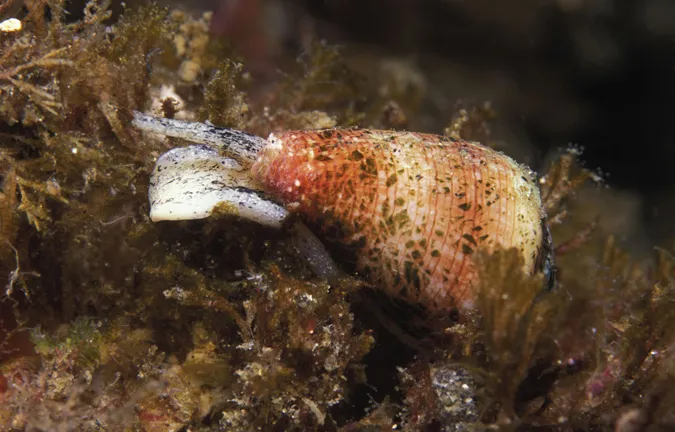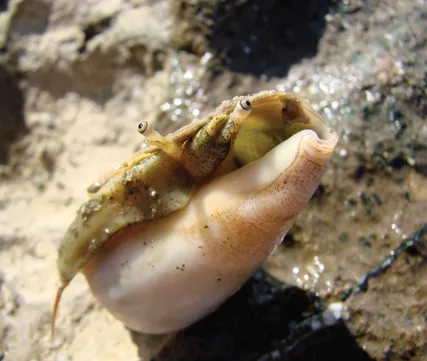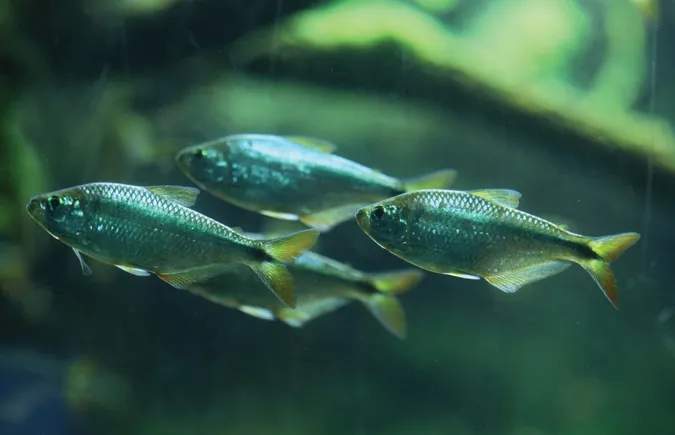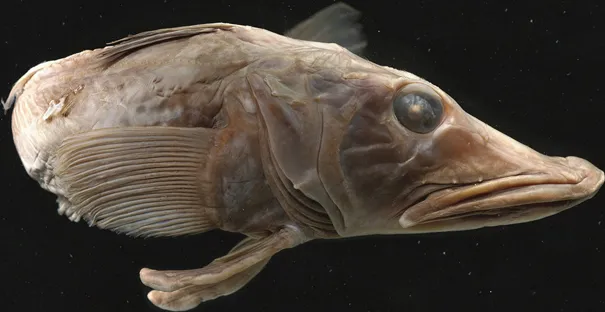
eBook - ePub
Things That Make You Go Yuck!
Mystifying Mutants
Jennifer Dlugos, Charlie Hatton
This is a test
Share book
- 112 pages
- English
- ePUB (mobile friendly)
- Available on iOS & Android
eBook - ePub
Things That Make You Go Yuck!
Mystifying Mutants
Jennifer Dlugos, Charlie Hatton
Book details
Book preview
Table of contents
Citations
About This Book
Hexapus. Singing mice. Spider worm. They sound like creatures from horror movies, but they are all real-life mutants that creep, crawl, and slither among us. In Things That Make You Go Yuck!: Mystifying Mutants, you'll learn that genes can be a freaky and fascinating business. From two-toned lobsters to hairless cats, this book showcases the strangest and most shocking genetic mutants in the plant and animal kingdoms. Whether it's nature's slimiest organisms or the weirdest mutations, Things That Make You Go Yuck! celebrates survival of the fittest, grossest, craziest, and creepiest things in nature, proving once and for all that life in the wild is anything but ordinary.Ages 9-12
Frequently asked questions
How do I cancel my subscription?
Can/how do I download books?
At the moment all of our mobile-responsive ePub books are available to download via the app. Most of our PDFs are also available to download and we're working on making the final remaining ones downloadable now. Learn more here.
What is the difference between the pricing plans?
Both plans give you full access to the library and all of Perlego’s features. The only differences are the price and subscription period: With the annual plan you’ll save around 30% compared to 12 months on the monthly plan.
What is Perlego?
We are an online textbook subscription service, where you can get access to an entire online library for less than the price of a single book per month. With over 1 million books across 1000+ topics, we’ve got you covered! Learn more here.
Do you support text-to-speech?
Look out for the read-aloud symbol on your next book to see if you can listen to it. The read-aloud tool reads text aloud for you, highlighting the text as it is being read. You can pause it, speed it up and slow it down. Learn more here.
Is Things That Make You Go Yuck! an online PDF/ePUB?
Yes, you can access Things That Make You Go Yuck! by Jennifer Dlugos, Charlie Hatton in PDF and/or ePUB format, as well as other popular books in Éducation & Éducation générale. We have over one million books available in our catalogue for you to explore.
Information

Orca whale
1 Sea Monsters
DOI: 10.4324/9781003239024-1
We go to the movies to see fearsome pirates battle giant Krakens or a super-shark take on a fishing boat, but we can rest easy knowing that these sea mutants came from a dark, slimy cavern in someone’s imagination. Or do they? Thankfully, we don’t need to worry too much about a Sharknado attacking us, but there are plenty of genetic sea monsters crawling, gliding, and oozing under the water. Th s chapter showcases some of the wettest and wildest mutants on Earth.
Do You Know Your Mutants?
In 201 1, a one-eyed sea creature was found in Mexico. What was it?
- An orca whale
- A hermit crab
- A dusky shark
Find out the answer at the end of the chapter!
Henry the Hexapus

There’s an old fishing boat saying: Fishing is like a box of chocolates; you never know what you’re going to get. Maybe that’s more of a shrimp boat thing. But it’s true, as a crew of Welsh lobstermen found out in 2008. Lobsters are caught in “pots,” cages with bait inside dropped to the ocean fl or. Hungry lobsters climb in, but so can other critters like crabs, scuba divers—and octopi.
(“Octopi” is a plural of “octopus.” Two other plurals—“octopuses” and “octopodes”—are also acceptable. “Octopusseseses” is not acceptable, apparently. But it is a lot of fun to say.)
That lobster boat crew found octdpi among their catch that day, but one was odd. It only had six legs. So it wasn’t an “octopus” (which means “eight-footed”) at all. It was a hexapus.
But this not-octopus wasn’t missing limbs from an accident or because he’d left his tentacles in his other octopus pants. He’d simply grown that way. Hisdack of leggage was likely due to a gene mutation, possibly in a Hox gene. Other oddly-legged octopi have also been seen—some with seven legs (a septopus!), nine legs (nonopus!) or even 10. (Ahoy, decapus!)
Meanwhile, our hexapus had a happy ending. He was sent to a local aquarium, dubbed Henry the Hexapus, and spent his days munching on hermit crabs and stretching his (six) legs. Like they say: Fishing is like a pot of octopi; you never know how many legs you’re going to get.
Hox Rocks!
Hox genes are called "master regulators" and are important for development in many animal species, including humans. Hox genes control how bodies form prebirth, and glitches in the process— like mutations—can lead to too many limbs, too few, or other strange results.

The Game of Cones
Nature plays more than its fair share of practical jokes. Take the cone snail, for instance. These colorful, sea-dwelling creatures carry some of the deadliest venom on the planet. Some species carry venom strong enough to kill a human, never mind a tiny sea critter. Yet, the cone snail is also as slow as . . . well, a snail. So, how dangerous can it really be? Any fish worth its sea salt could surely outswim it with one fin ied behind its back, right?
Wrong. The cone snail does have one fast-moving body part—a harpoon-like tooth that injects prey with its deadly venom. (Th s snail takes the term slowpoke a bit too literally.) After its feast stops struggling, this cone-shelled assassin slows down to a snail’s pace, taking its dear sweet time to swallow its prey whole.
Cone snails’ venom is actually one of the most complex venoms in the world, containing more than 100 different neurotoxins (poisons that affect the nerves, brain, and spinal cord). It’s so complex that scientists have not been able to make an antivenom for it yet. The genes that make this toxin for the snail are some of the fastest mutating genes in the animal kingdom. Over time the mutations have fi e-tuned the toxin, so it can kill or paralyze prey effici tly.
They say bad news travels fast, but apparently not as fast as cone snail mail.

Sweet and Deadly
There are more than 500 species of cone snail, but only a few are dangerous to humans. Some snails even use a potent form of insulin in their venom. Insulin is a chemical that controls your blood sugar levels. Cone snails use this insulin to send their prey into a deadly sugar crash before they even know what hit them.

Blinded by Fishy Science
They say the eyes are the window to the soul, but what if you don’t have any? In freshwater rivers in Mexico lives a little fish known as the Mexican tetra. It has all the standard fishy characteristics—shiny skin, fl ppy fi s, and googly eyes—but don’t let its cuteness fool you. Th s fish has a lot of weirdos in its family Deep below the surface, in the subterranean caves, lives the Mexican cave fish. It’s the exact same species as the Mexican tetra, but the cave fish has no eyes.
Granted, there isn’t much to see in a pitch-black underwater cave, but wouldn’t it be better to have eyes than not? Actually, no. Eyes use energy, so it’s actually better for the fish to lack its eyeballs to the curb. Scientists found that the blind cave fish have mutations in about a dozen eye genes that the Mexican tetra do not, but not all blind fish have the same genetic recipe. Fish from different caves can develop different mutations with the same no-eyed result. When scientists mated cave fish from different caves, they produced some off pring with functioning eyes, because the off pring did not inherit the precise combination of mutations to make them blind. Blind cave fish can also mate with the sighted tetra variety and produce sighted off pring. As the old saying goes: An eye for an eye for a ... fish?
Visiting the Fish Eye Doctor
As embryos, blind cave fish start to develop eyes, but the eyes degenerate as the fish grow, making them totally blind. A flap of skin grows over the area where functioning eyes should be. Scientists recently found that they can make blind cave fish grow full eyes underneath this skin simply by inserting an eye lens from a sighted tetra fish into a cave fish.


Ice(fish) Water in Their Veins
Blood, as a rule, is red. Thai’s due to a protein called hemoglobin (he-mehGLOW-bin), which is red in color and carries oxygen through the blood. Because oxygen is pretty important for our survival, so is hemoglobin. All vertebrates—animals with backbones, including birds, mammals, reptiles, amphibians, and many fish—depend on hemoglobin to transport oxygen.
Except. (In biology, there’s always an “except”)
Of about 50,000 known vertebrate species, just one family (16 species total) comes up short on hemoglobin. Known as crocodile icefish, they live in the chilly waters around Antarctica. They were discovered in 1927 by sailors from a Norwegian expedition, who noted the icefish had no scales, big gaping jaws (hence the “crocodile” name), and colorless blood.
Scientists later tested icefish DNA and found that the hemoglobin genes were either missing or mutated beyond repair. Icefish still need oxygen, but without hemoglobin, they can only use the oxygen that dissolves in their blood—10 times less than other vertebrate fish get.
Most animals couldn’t survive with these mutations. Luckily for icefish, the cold waters they swim in are rich in oxygen. Still, they have to work a lot harder just to get by. Icefish need 4 times more blood than other fish, and grow bigger hearts and wider blood vessels. Maybe they should invest in some tiny scuba tanks instead!
How's That Hemoglobin?
Hemoglobin is a protein in blood that carries oxygen from the lungs—or in fish, gills—to the rest of the body for energy. In mammals (like humans), hemoglobin is found in red blood cells and allows blood to carry 70 times more o...